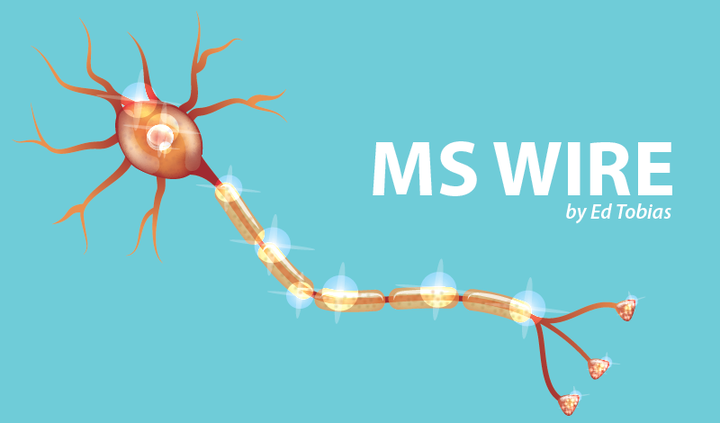MS News that Caught My Eye Last Week: Mayzent in EU for SPMS; Depression, Fatigue, and Quality of Life; Acthar Gel; Soothie Cushion

CHMP Favors Mayzent as Oral Treatment Specifically for Active SPMS Patients in EU
Mayzent (siponimod) is one of the newest disease-modifying treatments (DMT). I’m pleased that the Committee for Medicinal Products of Human Use (CHMP), which reviews treatments in the European Union, has recommended that the DMT be approved for active secondary progressive multiple sclerosis (SPMS). But why just for “active” disease? Whether or not MS is considered to be active is generally based on an MRI. But as many people with MS will attest, the disease can progress without MRI evidence. (See my column “If My MRI Is Stable Why Is My Walking Getting Worse?“). In my opinion, dividing SPMS into two categories only serves to delay needed treatment for people classified by MRI as having non-active SPMS but whose disease continues to progress. This is also a problem in the United States, where the Food and Drug Administration takes a similar approach.
The Committee for Medicinal Products for Human Use (CHMP) issued an opinion supporting Mayzent (siponimod) as an oral treatment specifically for adults with active secondary progressive multiple sclerosis (SPMS) in the European Union.
Opinions released by CHMP, an arm of the European Medicines Agency (EMA), carry weight and are generally accepted by the European Commission, which makes the final decisions.
Click here to read the full story.
***
Depression, Fatigue Influence Health-related Quality of Life More Than Physical Impairment of MS, Study Reveals
I’m having a hard time wrapping my head around this study because I believe that physical impairment causes depression and fatigue. Take away our physical problems, and we probably wouldn’t be depressed and/or super tired. But eliminate depression and fatigue, and we’re still left with the physical problems that affect our quality of life. So, while depression and fatigue do add to the impact on overall life quality, I don’t think they should be viewed as worse quality of life problems than physical impairment. Is that crazy logic?
Depression and fatigue have a more powerful influence on the overall health-related quality of life, compared to physical impairment, among patients with multiple sclerosis, a new study shows.
The study, “Contributing factors to health-related quality of life in multiple sclerosis,” was published in the journal Brain and Behavior.
Click here to read the full story.
***
Acthar Gel Quite Effective at Resolving Relapses as Alternative to Corticosteroids, Study Reports
Many people with MS don’t like steroids. They can bloat you, hype you up, and over time affect bone strength. They can, literally, leave a bad taste in your mouth. So, an alternative treatment to corticosteroids, the standard treatment for MS relapses, is welcome. However, I’m skeptical about this study as it was conducted by researchers from Mallinckrodt, the pharma company that developed and markets Acthar Gel.
Acthar Gel (repository corticotropin injection) is more effective for treating flares in multiple sclerosis (MS) than other alternatives, including intravenous immunoglobulin or plasmapheresis, a claims-based study from Mallinckrodt Pharmaceuticals reports.
The study, “Treatment Effectiveness for Resolution of Multiple Sclerosis Relapse in a US Health Plan Population,” was published in the journal Neurology and Therapy.
Click here to read the full story.
***
‘Soothie Cushion’ Designed to Regulate Body Temperature in Travelers With MS, Other Disabilities
This product is being launched just in time for the gift-giving and travel season. Who with MS wouldn’t want to try the Soothie cushion? Who could refuse a sales pitch that includes “enduring comfort … through hot and cold therapy?” The cushion can be used for a half-hour of heat at a time or 10 minutes of cold per hour. Its core can be heated in a microwave or placed in a freezer before insertion into a zippered pocket in the cushion, which can be worn like a backpack or attached to a chair while sitting. I haven’t tried it yet, so I don’t know whether to be hot, cold, or lukewarm about the product.
Newly launched, the Soothie Cushion is designed to provide seating comfort and help regulate the body temperature of travelers with disabilities, including multiple sclerosis (MS) and myasthenia gravis, says its official retailer, Special Needs Group/Special Needs at Sea (SNG).
The product is said to offer enduring comfort to wheelchair users through hot and cold therapy. What largely sets the Soothie cushion apart from other temperature-regulating treatments is its ability to use hot and cold therapy alternately — one immediately after the other — to offer quicker healing, recovery, and prescription-free pain relief, the company says.
Click here to read the full story.
***
Note: Multiple Sclerosis News Today is strictly a news and information website about the disease. It does not provide medical advice, diagnosis, or treatment. This content is not intended to be a substitute for professional medical advice, diagnosis, or treatment. Always seek the advice of your physician or other qualified health provider with any questions you may have regarding a medical condition. Never disregard professional medical advice or delay in seeking it because of something you have read on this website. The opinions expressed in this column are not those of Multiple Sclerosis News Today or its parent company, Bionews Services, and are intended to spark discussion about issues pertaining to multiple sclerosis.







MFinn777
I don't think your logic related to the depression/fatigue/physical symptoms impacting QoL is necessarily wrong, but I do disagree.
Since my diagnosis two years ago I have struggled with extreme depression at various points and to various degrees. I have few consistent symptoms and live a relatively normal life. My depression is driven by the inevitability of the physical symptoms that will eventually arise and slowly get worse. Hope this isn't a needless distinction from what you said.
Love your articles. Please keep writing!
Ed Tobias
Hi M Finn,
Thanks for taking the time to comment and share your experience. I don't think what you've written is a needless distinction. This website and I thrive on the opinions of the people who read what's written. I'm always trying to spark a good conversation about MS subjects.
I'm very happy that you love what I write. This sort of encouragement will keep me writing a long time.
Ed
Melissa Cash-Tenorio
I have read and read over many many posts on the ms website and I am far from being an expert but what I have learned is that once the people get the bad news diagnosis or the label of a diagnosis that depression seems to follow. I have also learned how to pick myself up again and again by creating creative ways to do different things. The worst thing that I can imagine is happening to me right now because my muscle spasms go from my left leg to my right leg with no warning. I am also single but have day and afternoon help but after I go to bed is when the spasms start. It's usually when the humidity is really high and gets me out of bed even after my 2 Requip, my Ambien, my methocarbamol,2 of my Tizanidine,1 Amitriptyline as well as taking a ben gay bath every night on my left hip, my SI joints my sartorius muscle, and the calves all the way down my legs just keep jerking. They used to call it RLS but now its known as Chronic Spastic tetraplegia which confuses most people. They go from walking with it to being in a wheelchair depending on the humidity. Strange HUH? Normally weather forecasters have a 50/50 shot of getting the weather right but if they would actually ask us we could tell them at least 3 days ahead that something is going to happen and whats so funny about this is they used to call that arthritis so I am wondering how big of a part arthritis plays with this diagnosis as well.
Cal Davison
I was haunted with. a kind of RLS similar to what Melissa shared. A long untreated period ensued, until more activity came, numb hand, arm and leg. Then the wl. side of my tongue went numb. My doc's nurse Sent me to the ER fearing a possible stroke. 5 hours later an MRI showed the signs of demylinization, the journey began. There's many medications our there, good and bad. I got lucky to have a great neurologist at the MS center near Seattle. I'm getting the best sleep of my 69 years. I walk like a drunken sailor, but sleep like a baby.
Ed Tobias
Hi Cal,
Thanks for sharing your comments. A good neuro is the key to successful treatment. They're generally in MS centers and I'm glad you found one.
Ed